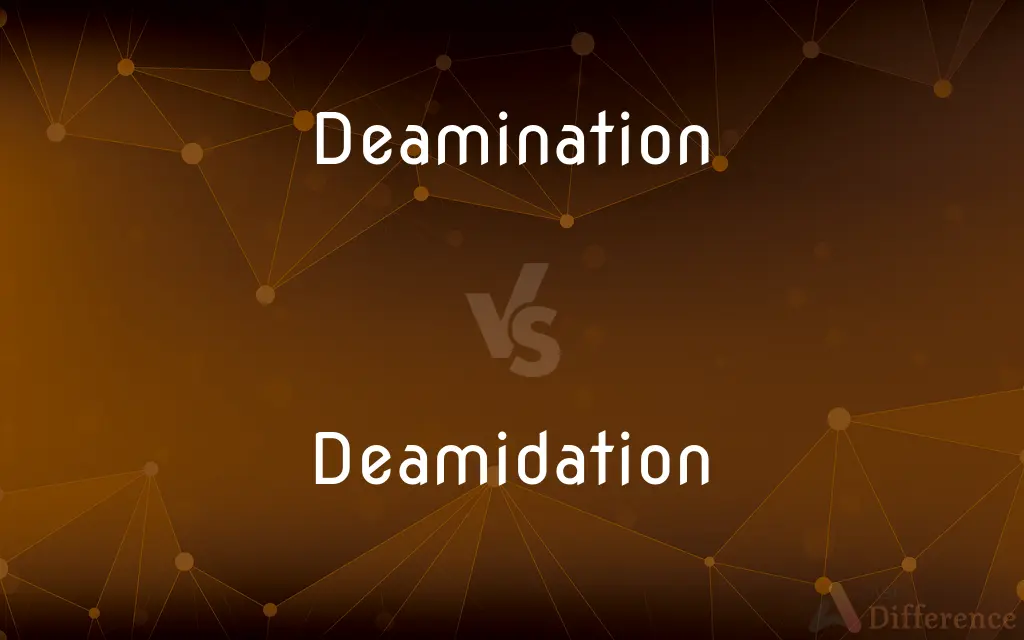Deamination vs. Deamidation — What's the Difference?

Difference Between Deamination and Deamidation
ADVERTISEMENT
Compare with Definitions
Deamination
(organic chemistry) The removal of an amino group from a compound.
Deamidation
Deamidation is a chemical reaction in which an amide functional group in the side chain of the amino acids asparagine or glutamine is removed or converted to another functional group. Typically, asparagine is converted to aspartic acid or isoaspartic acid.
Deamination
Deamination is the removal of an amino group from a molecule. Enzymes that catalyse this reaction are called deaminases.
Deamidation
(biochemistry) The conversion of glutamine, asparagine, glutamine residues in a polypeptide to glutamic acid or aspartic acid by treatment with strong acid, transamidase or deamidase.
Deamination
To remove an amino group, NH2, from (an organic compound).
ADVERTISEMENT
Deamidation
(organic chemistry) Conversion of an amide to a carboxylic acid.
Deamination
Removal of the amino radical from an amino acid or other amino compound
Share Your Discovery

Previous Comparison
Likewise vs. Indeed
Next Comparison
Antitype vs. Prototype














































